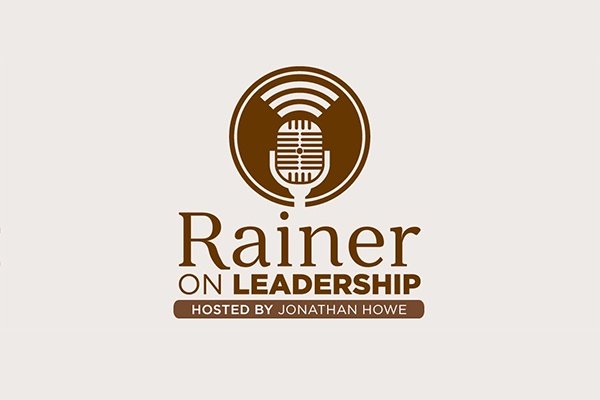
Written By: Jim Sheppard
Principal
After all, the research ECFA released last week confirmed that most churches have fared well in this season. 66% of churches said their April 2020 giving was the same or higher than April 2019. 72% of churches said their April 2020 giving was the same or higher than January 2020. Amazing given the level of world wide chaos we have experienced.
Not only have churches fared well thus far, they are optimistic about the next 90 days. 69% of churches said they are optimistic about giving for the next three months (May-July).
On top of that, the financial markets are doing well and have recovered a lot of the value that was lost in March and April.
I see that. And I also see warning signs on the horizon.
- •A new wave of layoffs is likely coming. Unemployment has increased dramatically and is now at a record level. It will take some time to get those people back to work. The expiration for the first PPP forgiveness period at the end of June will trigger some organizations to reassess head count now that the government subsidy has ended. Travel, tourism, restaurant, retail, hospitality, even healthcare will take time to recover. It is not out of the question that more unemployment could result in these sectors.
-
• Unless Congress authorizes additional support, many of the of the governmental supports that have been propping up the economy will expire.
• PPP funds and the reserves that created for churches may have helped in the April-June season but those funds will run out and churches will be faced with a new financial reality on July 1. While giving is good now, the Fall is a question mark. - • Many best givers have stepped up in March and April and have accelerated their giving to make sure their church has the funds to get through this season. Many of them may have already given their maximum gift for 2020, or at least most of it.
- •What about the disease itself? Are we in for a new wave? The virus numbers are mixed this past week, June 15, reporting increases in half the states.
- • Plans for many of the school systems, including colleges and universities, are up in the air. Many universities are telegraphing that they might be facing layoffs or furloughs.
- • The consumer confidence level, a good leading indicator for congregational giving, has sharply declined from 132.6 in February. It is now at 86.
All of this leads an optimist like me to say what is hard to say. It is not over. At least not yet. It could be that all of these concerns are unfounded.
However, if I were the CFO of a church, here is what I would be doing.
Build Reserves
In this season, think about creating as much financial margin as you can to weather a possible lean period through the Summer and into the Fall.
Many churches have experienced reduced operating expenses in this season. Identify what those expenses are for your church. Put away all of the money you are saving on operating expenses.
Pare expenses even further. This is the time to go through your 2020 budgets and pro formas and pare unnecessary operating costs as much as you can. Your world has changed dramatically since you adopted those budgets for this year. You have all the reason you need to re-examine even assumptions from 6 to 8 months ago. Identify additional expenses that can be pared and put all of that money into building up reserves.
Prepare For A Possible Downturn
As a former CFO of a public company, I am all about being prepared in case there is a downturn.
Generally, I recommend three scenarios. For lack of a better naming convention, let's call them Scenarios A, B, and C. They represent the effects of mild, moderate, and severe giving shifts, respectively. Scenario C represents what you envision as your worst case. It is the most painful scenario to put together. However, what I have learned is that getting our scenarios in place allowed us to relax a little and make better decisions as the situation unfolded. In other words, we were not reacting to what happened, we were proactively setting a plan in motion based on what we had already decided. That is what I am recommending you do now. Develop your plans for each of the three scenarios. Then set them in motion based on how the situation unfolds. The reality is that we never had to resort to Plan C but we could lead with the confidence that we knew what we would do if that situation ever unfolded.
In Scenario A, you would develop a financial plan around giving staying relatively close to where it has been historically. That might be a scenario for stable giving up to a decrease of say 10%. You would make mostly painless expense adjustments to the budget for the remainder of 2020. In all likelihood, staffing would not be affected in this scenario. That is, unless you know you are over staffed. This will be the easiest of the three scenarios to develop.
Scenario B would anticipate a larger increment of decrease and a different level of planning. For the purposes of this example, let’s say that is your scenario for a giving decrease of 15-25%. If you were a church that has developed reserves over the years, and we certainly recommend that, this would be a time for you to consider how much of those reserves would be deployed to make up for the shortfall in giving, particularly if you thought the shortfall was not going to be long-term but you need to plan for it in the coming 2 to 6 months. This scenario generally involves getting beyond superficial cuts and moving into a more significant expense realignment.
That could mean staffing. I urge churches to be careful before you put into place any staffing shifts, because moves like this always cause a reverberation in the congregation. It can signal instability and financial concern at a time when you least need for people to feel that. So, in addition to making the financial moves that you need to make, you will also have to decide how to message this to your people in a way that projects confidence in the church and its leaders.
Scenario C is the plan for a severe giving decrease that you see lasting beyond this season. Let’s say there is a decrease in giving of 30% or more. It is the most painful scenario to develop because it involves a complete re-thinking of your entire model of how you do church. It will entail significant shifts in staffing, which are difficult for any organization and even more so for a church. But you will have to do it if your financial reality is such that you cannot continue to fund your current staffing model.
In Conclusion
I am very optimistic about church finances once we get on the other side of this season. Like you, I want it to be over…sooner, not later. I’m the “glass more than half full" guy, so my tendency is to lean that way. In our current situation, however, I am not fully confident we are out of the woods on this. I want to be wrong. But, for now, let me just say again…it’s not over. Yet.

|
The Forward Focus Framework Coaching process combines ministry strategy with everyday generosity coaching to help your team define plans for multiple scenarios you will face in the next year. This flexible framework walks alongside you multiple times a month to refine your action plan, give your next steps, written and verbal scripts and relevant tools to help undergird your team’s leadership and results in the coming months. The monthly guidance will help your team execute high-level planning with solutions that address the most important issues in this season: |
Share this
You May Also Like
These Related Stories

Bringing Clarity to the Complicated
.png)
My Family or My Ministry…Should NEVER Be The Question



No Comments Yet
Let us know what you think